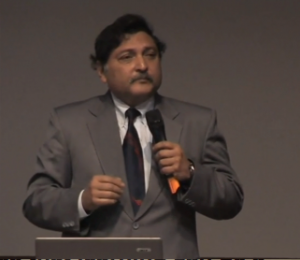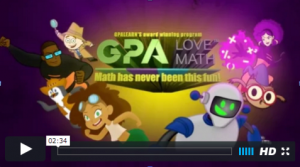Il commence à exister des solutions matériel pour donner à tous access au WorldWideWeb
http://player.vimeo.com/video/94715454
La combinaison d’un operating system spécifique et d’ordinateurs d’occasion ou recupérés
Il commence à exister des solutions matériel pour donner à tous access au WorldWideWeb
http://player.vimeo.com/video/94715454
La combinaison d’un operating system spécifique et d’ordinateurs d’occasion ou recupérés
Il existe depuis des années des plateformes pour que les enfants puissent créer des livres interractifs et ce à tous les niveaux.
Touchoo, www.touchoo.com which was founded in early 2010, aims to provide the leading platform for the creation and distribution of visually-intensive interactive mobile book-apps.
 It has released a web-based point-and-click authoring tool which enables to create elaborate, visually-intensive book-apps, and view them during the creation process on any PC or Mac, Android devices and iPads. No coding needed.
It has released a web-based point-and-click authoring tool which enables to create elaborate, visually-intensive book-apps, and view them during the creation process on any PC or Mac, Android devices and iPads. No coding needed.
http://en.wikipedia.org/wiki/Massive_open_online_course Wikipedia
A massive open online course (MOOC; /muːk/) is an online course aimed at unlimited participation and open access via the web. In addition to traditional course materials such as filmed lectures, readings, and problem sets, many MOOCs provide interactive user forums to support community interactions between students, professors, andteaching assistants (TAs). MOOCs are a recent development in distance education which was first introduced in 2008 and emerged as a popular mode of learning in 2012.
http://www.ted.com/talks/arthur_benjamin_s_formula_for_changing_math_education.html La formule d’Arthur Benjamin pour changer la manière d’instruire les mathématiques (sur TED)
 Il y a toujours quelqu’un pour demander à son professeur de mathématiques : “Vais-je un jour me servir dans ma vie du calcul ?” Et pour la plupart d’entre nous, selon Arthur Benjamin, la réponse est non. Il nous propose une audacieuse manière de transformer l’instruction des mathématiques pour la rendre pertinente à l’ère du numérique.
Il y a toujours quelqu’un pour demander à son professeur de mathématiques : “Vais-je un jour me servir dans ma vie du calcul ?” Et pour la plupart d’entre nous, selon Arthur Benjamin, la réponse est non. Il nous propose une audacieuse manière de transformer l’instruction des mathématiques pour la rendre pertinente à l’ère du numérique.
http://www.ted.com/talks/sugata_mitra_shows_how_kids_teach_themselves
Sugara Mitra , Inde, TED, 2007, 20:59, sub in 30 languages
 Speaking at LIFT 2007, Sugara Mitra presents his Hole in the Wall project. Young kids in this project figured out how to use a PC in english on their own — and then taught other kids. He asks, what else can children teach themselves?
Speaking at LIFT 2007, Sugara Mitra presents his Hole in the Wall project. Young kids in this project figured out how to use a PC in english on their own — and then taught other kids. He asks, what else can children teach themselves?
Educational researcher Sugata Mitra is the winner of the 2013 TED Prize. His wish: Build a School in the Cloud, where children can explore and learn from one another. He demonstrates that learning can be a self-organised system as long as collective interactions are able to fuel the system.
Educational researcher Dr. Sugata Mitra’s “Hole in the Wall” experiments have shown that, in the absence of supervision or formal teaching, children can teach themselves and each other, if they’re motivated by curiosity and peer interest. In 1999, Mitra and his colleagues dug a hole in a wall bordering an urban slum in New Delhi, installed an Internet-connected PC, and left it there (with a hidden camera filming the area). What they saw was kids from the slum playing around with the computer and in the process learning how to use it and how to go online, and then teaching each other.
The “Hole in the Wall” project demonstrates that, even in the absence of any direct input from a teacher, an environment that stimulates curiosity can cause learning through self-instruction and peer-shared knowledge. Mitra, who’s now a professor of educational technology at Newcastle University (UK), calls it “minimally invasive education.”
At TED2013, Sugata Mitra made a bold TED Prize wish: Help me build a place where children can explore and learn on their own — and teach one another — using resouces from the worldwide cloud.
Scenario-Based e-Learning to Improve Learners’ Engagement
http://elearningindustry.com/the-basics-of-scenario-based-e-learning by Christopher Pappas, February 2014
There are a myriad of instructional design theories and models to choose from when creating eLearning courses. In fact, selecting the one that fits your students’ or employees’ needs can often be a challenging task. However, if you are looking for a model that is ideally suited to improve learner engagement, then scenario-based eLearning may be the solution.Scenario-Based eLearning, essentially, immerses the learners in real life or situational simulations or learning experiences that allow them to gather skills or information that they will recall for future use. Information offered within a contextual setting enables learners not only to easily manage it within their working memory, but also to commit it to their long-term memory. There are a number of core characteristics for scenario-based learning, including:
How Scenario-Based eLearning Improves Engagement and Understanding
There are a variety of reasons for why scenario-based eLearning helps to improve learners’ engagement and understanding of core concepts. Here are just a few of the most convincing arguments for using scenario-based eLearning:
http://www.gpalearn.com/  Par GPA Learn, un site parmi d’autres, qui donne une clef de ce que peut être l’apprentissage avec le numérique. Le concept est déjà vieux mais c’est structuré. Pub:
Par GPA Learn, un site parmi d’autres, qui donne une clef de ce que peut être l’apprentissage avec le numérique. Le concept est déjà vieux mais c’est structuré. Pub:
Our revolutionary, web-based math learning application includes:
Experience the most comprehensive and engaging math learning platform in the industry today.
http://gpalovemath.com/?_ga=1.57580458.1070005397.1451392183 La pub avec Numérateur et Dénominateur, ca fait sourire, ca donne envie ou ca fait méga-peur ?